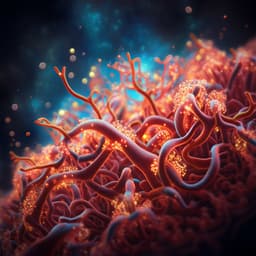
Engineering and Technology
Achieving structural white inspired by quasiordered microstructures in *Morpho theseus*
X. Zhao, Y. Xiong, et al.
Discover how Xinkun Zhao, Yuqin Xiong, Wanlin Wang, Wang Zhang, and Di Zhang have unraveled the structural whiteness of *Morpho theseus* butterfly scales through innovative numerical analyses and thermodynamic experiments, offering insights into cooling technologies and advanced material design.
Playback language: English
Related Publications
Explore these studies to deepen your understanding of the subject.







